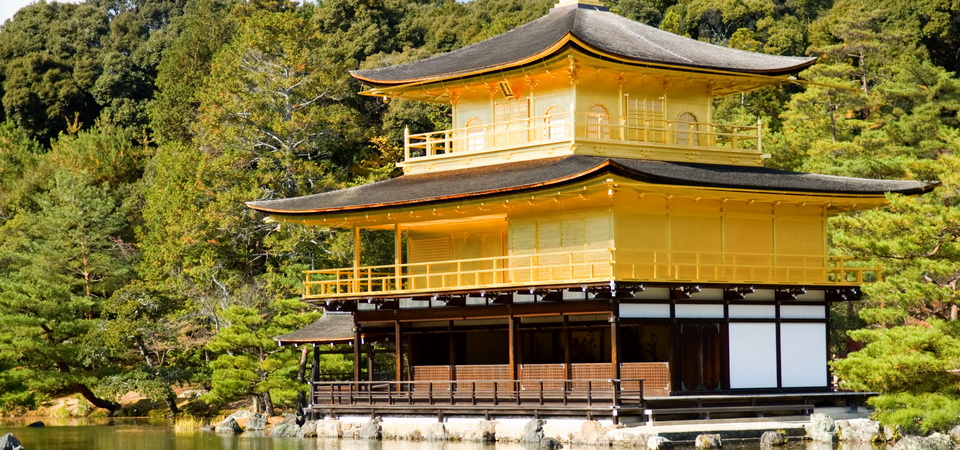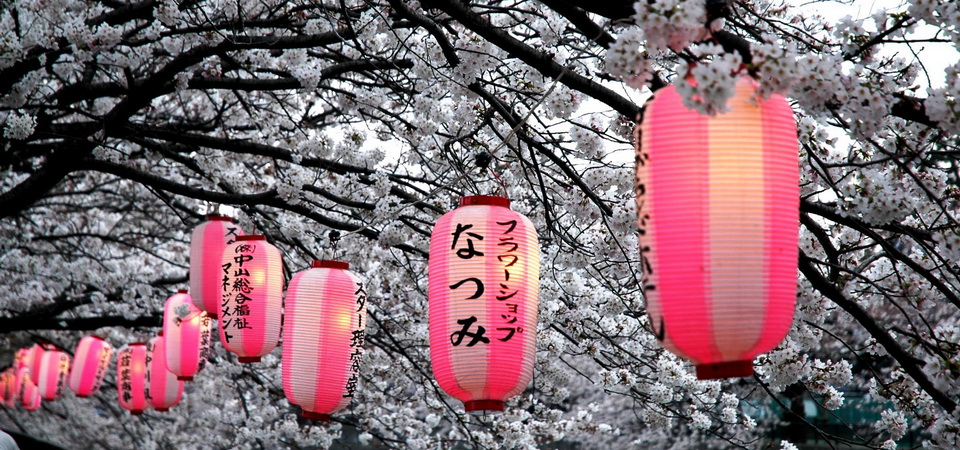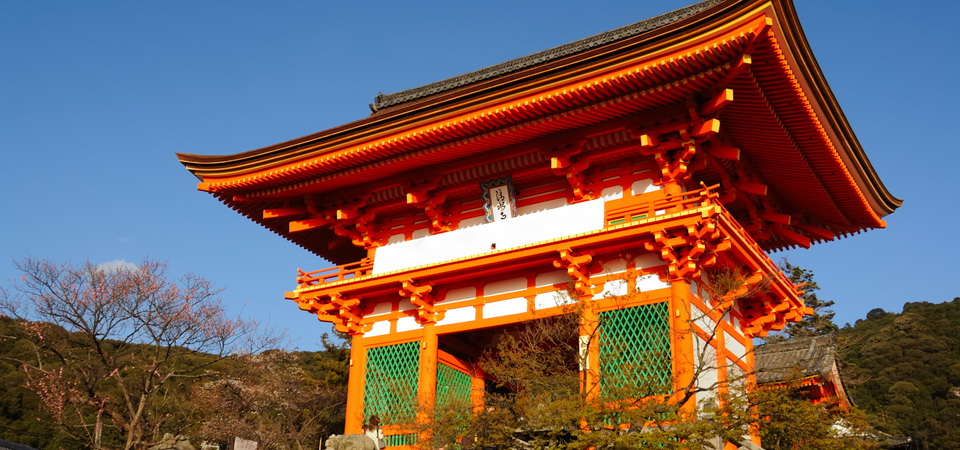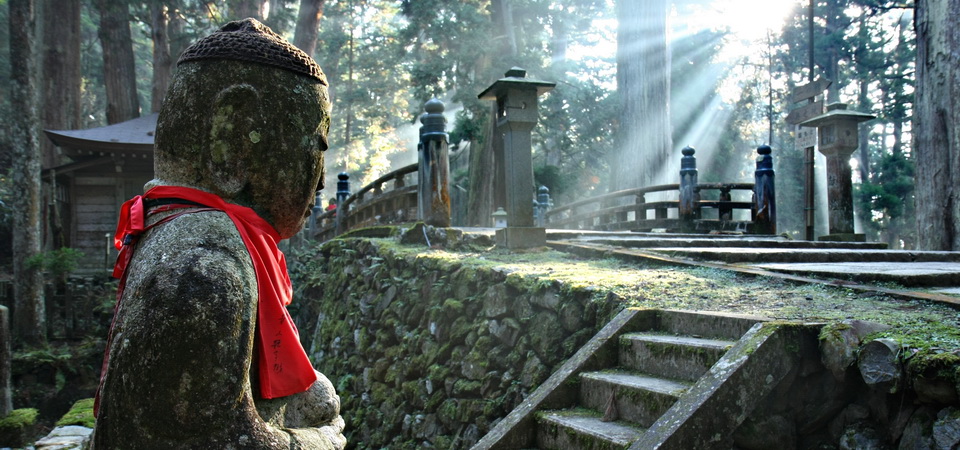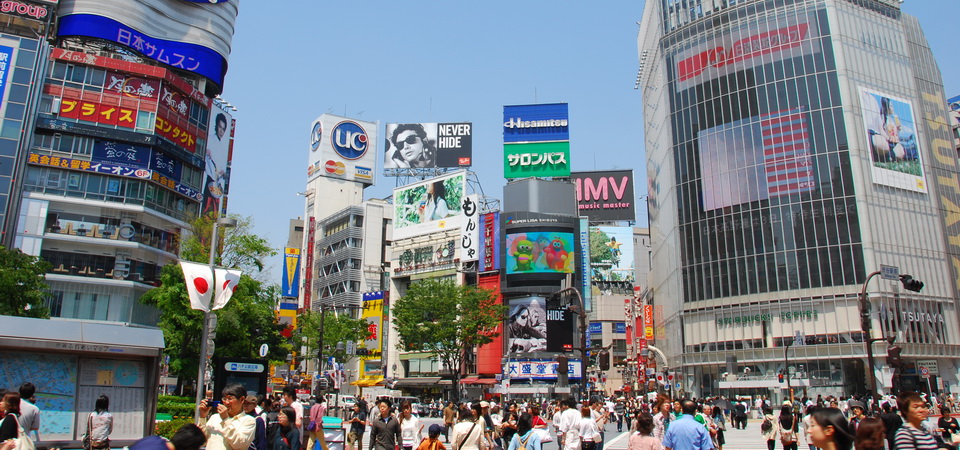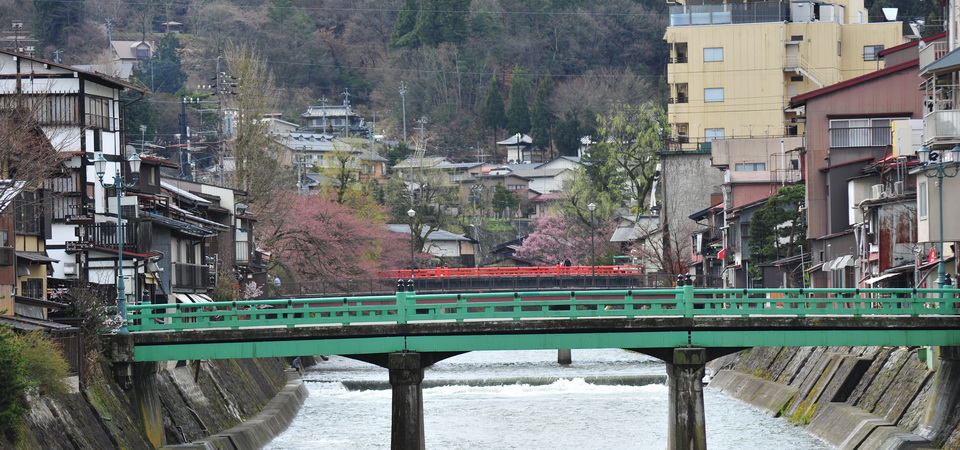From graceful geishas to savoury sushi, discover the culinary and cultural icons of Japan. Follow a food trail through Osaka, prepare noodles in Tokyo and discover buddhist cuisine. Then get a dose of culture in UNESCO-filled Kyoto, explore the south of Japan tastes in Fukuoka and witness age-old traditions at every turn.
Itinerary
📍 Narita International Airport (NRT) to Central Tokyo: 1.5 h Haneda International Airport (HND) to Central Tokyo: 50 min
Upon arrival to Tokyo’s airport, one of our representatives will be waiting to assist with transport to the hotel (either boarding the correct train or finding the appropriate shuttle bus to the hotel).
The rest of the day is at leisure.
Overnight in Tokyo
Inclusions:
📍 Start (guide tour): 08:30 Duration: 8 h *including pick-up/drop-off and transit times
This morning, accompany a local guide on a visit to Tokyo's Tsukiji Outer Market, the world-famous market filled with traditional shops and top-quality sushi restaurants. While the iconic inner wholesale fish market has been relocated to Toyosu, the outer market remains a lively center for visitors and locals alike to enjoy delicious food, and purchase kitchenware and other local specialties.
After exploring the market (but before leaving), enjoy a super-fresh sushi breakfast in a local restaurant – the best way to start a trip in Japan!
From Tsukiji, walk to Hamarikyu, a Japanese garden that once served as a private villa of a powerful feudal lord during the Edo period. Its wide collection of seasonal flowers make it one of the most visited gardens in Tokyo, however it's best known for its attractive is a teahouse, Nakajima-no-Ochaya.
Have a break in the teahouse and a cup of freshly made green tea while the guide shares interesting facts about sado (tea ceremony).
From the park, take the scenic river cruise to Asakusa, a part of Tokyo’s shitamachi or old town. Asakusa is the city’s oldest Geisha district and also home to Senso-ji, Tokyo’s oldest Buddhist temple. The streets around Senso-ji feature many traditional shops and are a delight to wander through.
Around noon, stop by one of the local restaurants for lunch. Although there’s a variety of food to choose from, Asakusa is more known for its best-tasting tempura.
From Asakusa, continue a short walk to Kappabashi, the so-called Kitchenware Town lined with dozens of specialized stores for knives, Japanese tableware, and even food replicas.
Last stop is in Ueno’s Ameyoko-cho, a former black market that sprang up after WWII. It is now a bustling shopping alley filled with food stalls that make it a great place to try some local snacks.
Overnight in Tokyo
Inclusions:
☕ Breakfast, 🥘 Lunch
📍 Start (activity): 10:30 or 11:30 Duration: 3.5-4 h
Begin the day with a hands-on culinary adventure. Head towards the cooking studio in Tokyo’s Tsukiji area to begin the morning’s soba-making workshop. The class will be held by either Akila Inouye, founder and Master Chef of the Tsukiji Soba Academy, or one of the academy’s graduates.
The activity will begin with a short demonstration by a sobatician, followed by a lesson on how to prepare the wheat mixture, the proper way to work on the dough and, last but definitely not the least, the precise way of cutting it into 1.6 mm thick noodles.
At the end of the lesson, cook the soba and dine with the teacher and the rest of the class in tachigui style, which means eating while standing.
The rest of the afternoon is free at leisure. Enjoy relaxing in the hotel or independently discover the busy streets of Shibuya (scramble crossing), visit the fashion mecca of Harajuku or to explore another shitamachi in Yanaka.
Optional Evening Tour: Tokyo Street Food Tour
This tour heads inside the lively street food scene of Tokyo: an exciting trip across some of the hidden pearls that can only be found with the help of a local, wandering around the city’s narrow streets.
A local English-speaking food expert will provide an escort through tiny izakayas (Japanese-style pubs) and small traditional restaurants and bars, each boasting distinctive atmospheres in heart of the traditional Japanese entertainment districts.
None of these local taverns normally accept reservations, but the expert guide is able to pick, depending on the evening, the right areas (always in central Tokyo) and venues to find available seats. Because of this, the tour is always unique and different for each guest.
Meet the food expert at the train station and enjoy 4 to 5 different venues during the tour. Although the menu is set, the guide will ensure stomachs are full and tastebuds are entirely satiated with a range of different options.
Time:
Start: 17:00
Duration: 3.5 h
Overnight in Tokyo
Inclusions:
☕ Breakfast, 🥘 Lunch
📍 Tokyo Station to Nagano Station: 2 h
Today is a self-guided day.
From Tokyo station board Japan’s world famous Shinkansen (bullet train) to Nagano. Speeding through the Japanese Alps, the Shinkansen only takes 90 minutes to reach Nagano.
Nestled in the mountain ranges of Japan’s Northern Alps, Nagano is often referred to as the ‘Roof of Japan’. The city evolved as a temple town around the historic Zenkoji Temple, one of Japan's most popular temples. Zenkoji was founded in the 7th Century and is home to, what many believe to be, the first ever Buddhist statue brought to Japan. The original statue remains hidden but a copy of it is shown to the public every six years for a few weeks. In the basement of the inner chamber of Zenkoji is an underground passage, where visitors can walk through in complete darkness in search of the ‘Key to Paradise’. This key is attached to the wall and is said to grant enlightenment to anybody who touches it.
Optional Activities at Zenkoji
Meet the local guide and learn more about this important temple, joining the goma fire ceremony, a purification ceremony when wooden tablet are burned into the fire. Following this mystic experience, move to a near building for practice zazen, the Buddhist meditation.
Time:
Start: 10:00 or 13:30
Duration: 2 h
Tonight accommodation will be shukubo (temple lodge), where the famous Buddhist cuisine is served
Inclusions:
☕ Breakfast, 🍗 Dinner
📍 Nagano Station to Kyoto Station: 4 h
Today is a self-guided day.
Join the morning prayer service at Zenkoji Temple with a local gide, to hear the priests chant and drum as they greet the morning. Vegetarian breakfast is served after the service.
Then get on a scenic train ride through Japanese Alps before ride the bullet train to Japan’s cultural capital, Kyoto. Kyoto is home to around 2,000 shrines and temples, including 17 UNESCO World Heritage Sites.
The rest of the day is at leisure.
Optional Evening Tour: A Taste of Gion Food Tour
Kyoto’s Gion district is often cited as many a visitor’s favourite part of the city. The historic cobblestone streets are lined with traditional, narrow wooden buildings known as machiya, teahouses known as ochaya, and traditional shops selling local specialities.
Meet the guide in front of Minami-za, the historic kabuki theatre along the bank of the Kamo River in Shijo.
The first stop is a small restaurant in the northern end of Gion, where guests will encounter a sophisticated yet homely atmosphere. Enjoy several Kyoto-style dishes that highlight the seasonal nature of Japanese cooking. Chat with the staff as food is prepared, and learn why a meal in Kyoto is just as much about conversation as it is about the cuisine.
After this, take a leisurely stroll to the next location, past the illuminated Shirokawa River and the charming Tatsumibashi Bridge. Most geisha start to entertain at 18:00, so the chance of seeing one of these finely attired ladies darting along the winding streets to their engagements is quite high.
The second stop is another cozy Gion restaurant. This is where the locals come to unwind later in the evening, but tonight’s dinner begins before the place gets too busy, allowing for a more relaxed atmosphere. Dive deeper into Kyoto cuisine, discovering the fresh vegetables, rich tofu, and smooth dashi fish broth that Kyoto is known for.
No food adventure is complete without dessert, and the decision for the final stop is up to the guests: a delightful traditional sweet known as dango or a refreshing green tea ice cream.
Upon returning to the meetup location, guests are free to return to their accommodation or continue to explore city’s nightlife independently. (D)
Time:
Start: 17:00
Duration: approx. 3 h
*Not available on SUN
Overnight in Kyoto
Inclusions:
☕ Breakfast, 🥘 Lunch
📍 Start (guided tour): 09:00 Duration: 8 h *including pick-up/drop-off and transit times
Today’s tour starts with a visit to one of Kyoto’s most iconic sites: the Fushimi Inari Shinto Shrine. A lavishly decorated building houses the goddess of rice, and thousands of orange torii gates stretch up the mountainside in long tunnels. Unlike any other shrine in Japan, this is an ideal spot to understand how Shintoism is tied to respect for nature.
Board a train to Sanjusangendo, a stunning Buddhist temple often overlooked by tourists. A mesmerizing display of 1001 life-sized golden Buddhist statues awaits inside the world’s longest wooden building, sure to be one of the most memorable sights of the entire trip.
Take a taxi to the entrance of Nishiki Market, a long covered street of shops and stalls often called “Kyoto’s kitchen.” From traditional to sellers of tofu, fish, and pickles to shops showcasing knives and handicrafts, there is a tantalizing amount of things to see and taste here.
Don’t get too full snacking in the market, as lunch is next at a nearby restaurant. The guide will suggest locations based on the guests’ preferences (guests should notify guide of dietary restrictions at the start of the tour).
After lunch, travel to Nijo Castle, an ornamental palace built for the shogun in the early 1600s. The beautiful building is known for its finely painted walls and “chirping nightingale” floors that squeak under the feet of intruders. Walk the halls, see the audience chambers, and experience what it was like to visit the military ruler of Japan in the classic era of samurai.
Hop aboard the subway for a short ride to the eastern foothills of Kyoto. The final location of today is Nanzenji Zen Temple, a quiet retreat where monks have lived in peaceful repose since 1291. See the famous Zen rock garden whose meaning is left up to the viewer. Is it meant to be islands in a calm ocean, or a depiction of wild animals crossing a raging river?
After a full day of sightseeing, part ways with the guide and return to the hotel or continue to explore independently.
Overnight in Kyoto
Inclusions:
☕ Breakfast, 🍗 Dinner
📍 Start (activity): 14:30 Duration: 3.5 h
The rest of the morning is free at leisure until the food market tour and cooking class in the afternoon.
Set off on a Kyoto food tour that is guaranteed to tantalise the taste buds. Join with a local guide and head to Nishiki Market for an introduction into the world of Japanese cuisine. Walk through the mile-long market street, browsing the food stalls for local ingredients and spices. The guide will explain how these items are used in authentic Japanese dishes and help to select some of the freshest ingredients for the day's cooking class.
Loaded with local produce, leave the market and head to the cooking class. Enjoy a sake tasting upon arrival at the machiya (traditional wooden townhouse), learning about the process of brewing this traditional alcohol and sampling different varieties.
Then it’s time to start cooking. Step into the kitchen and join a local culinary expert for a fun, interactive culinary experience. Learn to make rolled sushi, miso soup and fruit salad using traditional techniques and hear about the dining habits of the Japanese people. After this delicious, home-cooked dinner, say farewell to the cook and head out to explore Kyoto’s nightlife or return to the hotel.
Overnight in Kyoto
Inclusions:
☕ Breakfast, 🍗 Dinner
📍 Kyoto Station to Hakata Station: 3.5 h Time: Start (activity): 15:30 Duration: 3.5 h
After breakfast, get on the bullet train to Fukuoka, the Kyushu culinary capital and prepare for an afternoon tour discovering the taste of the city.
Today’s tour starts at 15:30. Meet a foodie guide for a journey through the streets of Fukuoka to learn about the food culture in one of the best Japanese cities for cuisine. The first stop will be the fish market to see how local people choose the freshest ingredients to put on the table. Here, sample a variety of dried and deep fried food.
Move on to the basement floor of a department store, known as “depachika”, where delicatessens, confectioners, and other food counters are located, before experiencing a stand-up eating shop. Learn about this interesting way of enjoying food, popular especially among busy salarymen with no time to sit down for a meal.
The final stop will be at the famous yatai street food stalls, part of the culture of Fukuoka, where it’s easy to strike up conversations with other customers. There are nearly 100 yatai in Fukuoka and they open in the early evening, offering both traditional Japanese dishes such as tempura and oden, as well as local Fukuoka cuisine.
Part ways with the guide and continue exploring the Fukuoka nightlife independently.
Overnight in Fukuoka
Inclusions:
☕ Breakfast, 🍗 Dinner
Today is a self-guided day.
Suggested itinerary
This morning explore Dazaifu, a city established in the 7th century which became the location of the Kyushu government for more than 500 years. Additionally, Dazaifu held an important role for Japan’s diplomatic relations and its defense.
The first stop will be the famous Dazaifu Tenmangu Shrine, which was built on the site of Sugawara Michizane’s grave. All Tenmangu shrines in Japan are dedicated to Michizane’s spirit, which makes this the most important Tenmangu shrine in Japan, together with Kitano Tenmangu in Kyoto.
Continue to Komyozenji Temple, which was established in the middle of the Kamakura period by a member of the Rinzai sect of Japanese Buddhism. It is especially famous for its two Japanese gardens, the front garden and the rear garden. While the front garden is composed of fifteen rocks, the rear garden includes a lot of plants and moss as well as rocks and pebbles, resembling land and water.
Distance and journey time (approximation):
Fukuoka to Dazaifu: 30 h by train
Note: Roundtrip train tickets to Dazaifu can be arranged at an additional cost.
Suggested Optional Tour: Explore Fukuoka by Bike
This morning, get on a speed cross bike and prepare for a pleasant, flat ride to explore the city of Fukuoka with a local guide.
The first destination is the Hakata old town, the home of Fukuoka’s two biggest festivals, Hakata Gion Yamakasa and Hakata Dontaku, which the guide can tell stories about. Several temples and shrines are located here, and the guide will offer explanations about the difference of Shinto and Buddhism from a local’s perspective. Continue cycling down backstreets to get a glimpse of local life before arriving in the park housing the ruins of Fukuoka Castle.
Learn about the history of the town at the Korokan Historical Museum and enjoy the passing of the season at the pleasant Ohori Park before reaching the seaside. Take a spin along the coast, refreshed by the sea breeze.
After the cycling, recover energy with a delicious ramen lunch in a local restaurant. Hakata ramen is of the tonkotsu variety (pork bone broth ramen), which originated in the city and is now considered by many to be the best ramen in Japan!
Return the bikes and part ways with the guide. Continue exploring Fukuoka on foot or return to the hotel.
Time:
Start (guided tour): 09:00
Duration: 4.5h
Overnight in Fukuoka
Inclusions:
☕ Breakfast
📍 Hakata Station to Nankai Namba Station: 2.5 h Time: Start: 17:00 (shared), 18:00 (private) Duration: approx. 3 h
The rest of the day is at leisure until the scheduled departure to Osaka. After checking into the hotel, start exploring the lively streets of Osaka, Japan’s culinary capital. Osaka’s flamboyance, fun-loving people, and amazing food make up for what it lacks in tourist attractions.
Suggested Self-Guide Itinerary:
In Osaka, the following places are recommended:
Dotonbori
Dotonbori is a restaurant mecca which has long-been referred to as Osaka’s entertainment district. It is well-known for its bright neon lights, energetic shop owners and food stalls that are filled with some local Osakan delights such as takoyaki (octopus balls) and fugu (poisonous puffer fish).
Umeda
Umeda is where most of the city’s most modern buildings are found. Some of the notable buildings are HEP (Hankyu Entertainment Park), which features a big Ferris wheel and is perfect for some last-minute shopping; Kitashinchi District, housing some of the city’s culinary specialties; and the Umeda Sky Building, a pair of skyscrapers connected in “mid-air”, built in an unusual architectural form rarely seen anywhere in the world. Feel the fresh air and enjoy 360-degree panoramic views at the ‘Floating Garden Observatory’.
Today’s tour begins at 17:00 or 18:00 depending on whether it is shared or private. Osaka is an epicurean’s delight. Indeed, the motto that the city’s exuberant inhabitants live by is kuidaore – “to eat oneself bankrupt.”
The first stop will be to try a new style of tempura in an eatery tucked away in a small alleyway. Old favourites such as shrimp tempura, and more experimental combinations such as asparagus tempura and cheese can be found on the menu.
Next, head to a restaurant specialising in wagyu beef dishes. Often referred to as the most expensive beef in the world, wagyu beef is of a superb quality, and is on many a gourmet’s wish list. Enjoy the melt-in-the-mouth textures with a refreshing cocktail.
After walking around the atmospheric backstreets, the final stop will be a small teppanyaki restaurant to try some delicious gyoza and negiyaki cooked on a metal plate right in front of guests.
Bid farewell to the affable guide, and either return to the hotel or go for a stroll around the neighbourhood to take in the sights.
Inclusions:
☕ Breakfast
📍 Start (guided tour): 09:00 Duration: 8 h *time includes pick-up/drop-off and transit time
The first stop of the morning is at Osaka Castle, one of the most visited places in the city for its history, architectural design, and cherry blossom trees all abloom in spring. Aside from the artefacts on display and the view of the city from its topmost floor, the surrounding garden and moats make the castle one of the must-see places in the city.
This is followed by a scenic cruise along Okawa River, which offers views of Nakanoshima Park and the red-bricked Mint Museum. In spring, the riverbanks of Okawa are lined with cherry blossom trees, making the trip more spectacular.
Return to Namba area for a better feel of the “Osakan vibe.” The afternoon tour includes a walk through the busy streets of Dotonbori, which has long-been referred to as Osaka’s entertainment district and restaurant mecca. Although not as well-visited as the main shopping and dining arcade, the backstreets of Dotonbori still has a few hidden gems that can be a bit surprising.
One of these is the Kamigata Ukiyo-e Museum, the sole museum in the world that has permanent displays of the Kamigata-style ukiyo-e or woodblock-printed books and paintings. The regions of Osaka and Kyoto were used to be called Kamigata because of the prosperous industry in woodblock printing.
Another interesting spot is Hozen-ji Yokocho, an area with narrow alleys filled with more than 60 traditional restaurants and izakaya. At the end of one of these alleys is Hozen-ji Temple, wherein worshippers splash water on the statue of the deity instead of tossing coins as offering.
Overnight in Osaka
Inclusions:
☕ Breakfast, 🍗 Dinner
📍 JR Namba Station to Kansai Airport: 50 min JR Shin-Osaka Station to Kansai Airport: 50 min
The rest of the day is at leisure until the departing flight from Kansai International Airport.
Inclusions:
☕ Breakfast
You might also like...
Here is a selection of products that may also fit the needs of your client.
Become a partner-
You might also like...
Here is a selection of products that may also fit the needs of your client.
Become a partner -
-
-
Get in touch
Our sales team is on hand to ensure that the process of working with us is as smooth as possible. If you should have any questions, feel free to reach out to them.



